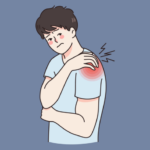With millions of websites vying for consumer attention, standing out from the crowd requires strategic efforts. One of the most effective strategies to enhance visibility and drive sales is through Search Engine Optimization (SEO). In this blog, we’ll explore the essentials of SEO tailored specifically for e-commerce websites, outlining actionable tactics to help you increase online sales.
What is E-commerce SEO
E-commerce SEO refers to the process of optimizing your online store’s website to improve its visibility in search engine results pages (SERPs). Unlike traditional SEO, e-commerce SEO focuses on product pages, categories, and the overall structure of an online store to attract organic traffic from search engines like Google, Bing, and others. For the right strategy choose the best seo service provider company.
Why is E-commerce SEO Crucial?
- Increased Visibility: Ranking higher in search engine results means more visibility among potential customers who are actively searching for products you offer.
- Targeted Traffic: SEO helps attract highly relevant traffic—people who are likely to convert into customers—leading to higher conversion rates.
- Cost-Effective: Compared to paid advertising, SEO can provide long-term benefits with a relatively lower cost per acquisition.
- Brand Credibility: Ranking well in search engines establishes trust and credibility among users, as top positions are often associated with authority and reliability.
Read more: Google June 2024 Spam Algorithm Update
Essential SEO Tactics for E-commerce Websites
Keyword Research and Optimization
Keyword research forms the foundation of any successful SEO strategy. For e-commerce, it’s crucial to identify relevant keywords that potential customers use when searching for products similar to yours. Tools like Google Keyword Planner, SEMrush, or Ahrefs can help you find keywords with moderate to high search volumes and reasonable competition levels.
Once identified, integrate these keywords naturally into your product titles, descriptions, meta tags, and URLs. Avoid keyword stuffing and ensure that the content reads well and provides value to users while also signaling relevance to search engines.
Optimize Product Pages
Each product page on your e-commerce site should be optimized to cater to both search engines and users. Here’s how you can do it:
- Unique Descriptions: Craft unique and compelling product descriptions for each item you sell. Avoid using manufacturer-provided descriptions verbatim, as this can lead to duplicate content issues.
- Image Optimization: Optimize product images with descriptive alt text that includes relevant keywords. This not only improves accessibility but also enhances visibility in image search results.
- Customer Reviews: Encourage customers to leave reviews and prominently display them on your product pages. User-generated content like reviews can improve search rankings and build trust with potential buyers.
Improve Site Architecture and Navigation
A well-structured website not only enhances user experience but also improves search engine crawlability. Consider the following:
- Clear Navigation: Ensure that your site has intuitive navigation with clear categories and subcategories. This helps users find products quickly and easily.
- Internal Linking: Link related products and categories within your site’s content. This not only improves navigation but also distributes link equity across different pages of your site.
Mobile Optimization
Given the increasing trend of mobile shopping, optimizing your e-commerce site for mobile devices is critical:
- Responsive Design: Ensure that your website is responsive and adapts seamlessly to different screen sizes. A responsive design improves user experience and can positively impact your search engine rankings.
- Mobile-Friendly Content: Optimize your content and images for mobile consumption. Consider how users interact with your site on mobile devices and make adjustments to enhance their experience.
Technical SEO
Technical SEO focuses on optimizing the technical aspects of your website to improve its performance and search engine visibility:
- Site Speed: Improve your site’s loading times by optimizing images, leveraging browser caching, and minimizing HTTP requests. Faster loading times not only enhance user experience but also contribute to better search engine rankings.
- SSL Security: Ensure that your site has HTTPS encryption, indicating a secure connection. Sites with HTTPS are favored by search engines and may receive a ranking boost as a result.
Content Marketing and Blogging
Content marketing plays a crucial role in attracting organic traffic to your e-commerce site:
- Blog Posts: Create informative and engaging blog posts that address customer pain points, provide solutions, and showcase your products. Blogging regularly can help you target long-tail keywords and establish your site as a valuable resource in your industry.
- Video Content: Incorporate product videos, tutorials, or demonstrations into your content strategy. Videos can engage users and keep them on your site longer, signaling to search engines that your content is valuable and relevant.
Conclusion
Implementing these essential SEO tactics for your e-commerce website can significantly improve its visibility in search engine results, attract more qualified traffic, and ultimately increase your online sales. By focusing on keyword optimization, enhancing user experience, and leveraging technical SEO best practices, you can position your e-commerce business for sustained growth and success in a competitive online marketplace.
SpaceEdge Technology: Best SEO service provider
SpaceEdge Technology is a premier SEO service provider in India, dedicated to propelling businesses to new heights of digital success. With a team of seasoned SEO experts and cutting-edge strategies, we specialize in delivering comprehensive and customized SEO solutions that drive traffic, enhance visibility, and boost online revenue.




